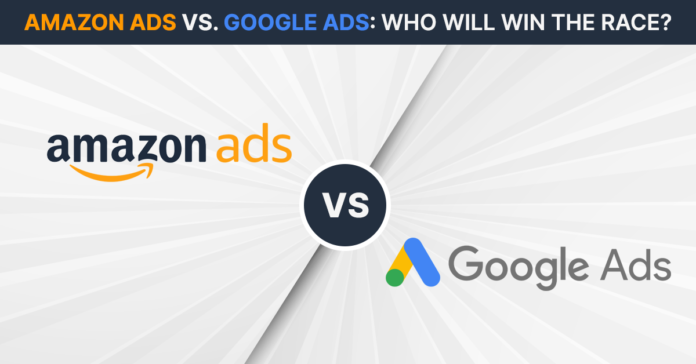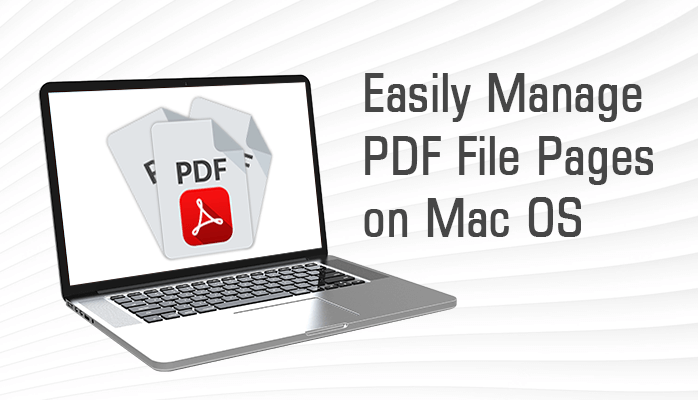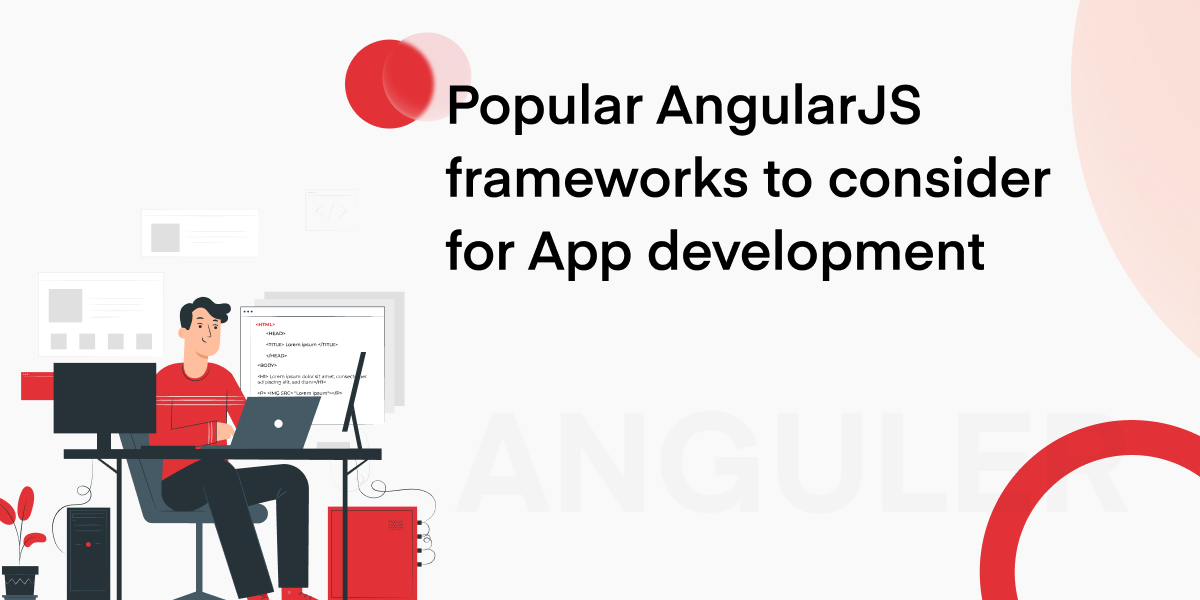Digital marketing is more critical than ever as the number of people using the internet actively rises each day. Research shows that in April 2022, there were five billion internet users around the globe. Digital marketing provides businesses access to that global market through organic and paid search marketing.
The most popular tool for paid search marketing is Google Ads. It has maintained the most significant market share in internet advertising since its launch in October 2000. This is because it moved away from only delivering adverts based on the highest bid to favor advertisers with high ad quality scores while still considering the bid amount. But Google is being slowly overtaken by Amazon. By 2023, Amazon’s digital advertising revenue reached $30 billion, representing an astounding rise of 23% from 2019.
In the race of paid search marketing, both these platforms (Amazon Ads or Google Ads) are top runners in 2022. So, if you intend to choose one of them, you must determine which one is a better option for you.
Amazon Ads vs. Google Ads – Which is Better?
We will examine the performance of these two ad platforms based on the following dimensions.
1. Commission
The lack of commission is a crucial benefit of using Google Ads over Amazon Ads. Both platforms demand that advertisers pay per click, but unlike Amazon, Google does not impose a fee on the sales that result from customers clicking on its advertisements. Instead, sellers get to retain the additional margin and just have to pay the cost of the ads.
2. Cost of Ads
Amazon ad clicks are cheaper depending on the product you are selling as compared to clicking on Google Ads. When comparing the average cost-per-click on various platforms, statistics reveal that Amazon costs 68% cheaper than Google advertisements.
3. Conversion Rate
Every day, millions of people purchase things on Amazon. That’s an advantage Amazon has over other PPC platforms. Some Amazon marketers claim that the buy-now attitude of customers on this platform results in conversion rates that are ten times greater than those of other PPC platforms. Another research shows that the average conversion rate for Amazon ads is 10%, while that for Google search ads is 3.75%.
One of the reasons for the higher conversion rate on Amazon is the use of transactional keywords. Customers on Amazon use keywords to find what they want to buy. The intent is very clear in this case, which increases the chances that a seller’s ad will perform. For instance, a person on Google may type in “white shirt,” whereas a user on Amazon would type in “medium size white shirt for women.” In Google search, sellers are not so clear about the user intent (whether they will buy the product or just need to know something about white shirts), but on Amazon, it is definitive that the customer is planning to buy a medium-sized white shirt for women.
4. Bidding Process
Google Ads choose each ad auction’s winner based on an Ad Rank. Ad Rank will evaluate every aspect of your ad, including its relevance, the demographics of its target audience, the likelihood that it will be clicked on, and the price you bid, before assigning it a ranking. The possibility that your adverts show when consumers enter the term increases with your Ad Rank score.
But Amazon Ads don’t work the same way. Instead, the bidding procedure for Amazon Ads is less quality-focused and more money-focused. While relevance impacts Amazon ad performance, the bid matters more. The method is referred to as a “second price auction,” meaning that the winner has to pay $0.01 more than the second-highest bid.
5. Targeting
Keyword search is the primary method used by both Amazon and Google to target customers. Exact, broad, and phrase keywords match categories are all supported by both platforms.
But, Amazon PPC marketing has an advantage over Google because of its distinctive and diverse targeting features. Advertisers can leverage automated targeting and delegate keyword research to Amazon for their Sponsored Products ads. Advertisers can also choose manual keyword targeting (if they feel that to be beneficial.) However, the gist remains that Amazon has better and more flexible keyword targeting options. Additionally, Amazon connects adverts with comparable keywords and items and creates a list of search phrases and items where your ad appeared, giving you important information about the ad performance. That provides insights into key terms and items you should use or stay away from in your custom targeting campaigns.
6. Audience and demographics data
Amazon is not even close to Google in the competition for this dimension. As Google has a vast pool of data, marketers have the opportunity to use that data to reach their target audience. Advertisers may leverage Google’s extensive user data archive to improve their marketing strategies. For example, you may target and exclude consumers from your advertisements using information such as gender, income, family age, device, interests and hobbies, relationship status, and more.
But Amazon PPC experts only have access to such capabilities for DSP, that is, Demand Side Platform, which is Amazon’s display network offering.
| Dimensions | Google Ads | Amazon Ads |
| Commission | No commission on the products sold through ads. | Takes commission for every product sold. |
| Cost ads | Google ads are costlier, | Amazon ads are one of the cheapest |
| Conversion rates | Lower than Amazon Ads | Conversion rates are higher |
| Bidding process | Depends on Ad Rank | Highest paying bid wins |
| Automatic Targeting | No algorithmic targeting | Have automatic targeting system |
| Audience Data | Vast Audience with documented interests, income, age, family age, device, hobbies and relationship status, etc. | Has access to a lesser amount of audience data when compared to Google but still offers analytics and reporting options |
Which one is Better?
As we have discussed, the advantages of both platforms depend upon many parameters, a few of which are given above. It solely depends on the marketer’s objectives, preferences, and budget.
Conclusion
Both Google Ads and Amazon PPC have their advantages and disadvantages. Both have the capacity to propel your company towards success when utilized properly. Knowing everything about how each of them works helps in making the most of them, but ultimately, what matters is if your requirements align with their capabilities. For example, you can choose Google if you want to increase website traffic or promote your services. On the other hand, Amazon is the best option for your business if you offer a range of products and are focused on securing sales.
So, when pressed to choose one or the other, it is always better to analyze what you need and if either of them can deliver on all your expectations within the determined budget.
Summary
In this digital marketing era, one of the most popular and practical approaches to generating leads and increasing sales for the business is running ads campaigns on different platforms. To make the most out of opportunities, many tech giants now provide their own paid content services, with Google Ads and Amazon Ads stepping out as the most beneficial ones. Both the platforms have a vast customer base, which allows businesses of all kinds to sell their products. But as both platforms have some similarities, they also have differences; marketers have to decide which among these two they should choose. If you are one of the marketers who need to make this decision, continue reading to know which is better and why?
Author Bio- Mike Wilsonn is a content strategist at SunTec India with a specialization in eCommerce and Amazon PPC. He has 5+ years of experience as a B2B content creator and has written numerous informative pieces to help sellers make sense of the continuously evolving eCommerce landscape.
















